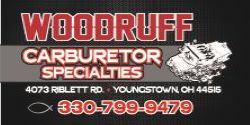What happened to the old Motorola transistors? They still make them.
You are using an out of date browser. It may not display this or other websites correctly.
You should upgrade or use an alternative browser.
You should upgrade or use an alternative browser.
1975 ignition control module toasting another one..
- Thread starter pedal2themetal
- Start date
- Local time
- 4:16 PM
- Joined
- Jul 1, 2015
- Messages
- 5,779
- Reaction score
- 7,268
Do you know the part number of both the TO3 transistor and TO220 transistor.....specifically, max collector - emitter junction current, the PIV of the junction, the thermal characteristics (max degree at full load). These transistors, depending on specifics are available in a Power Darlington configuration, containing a built-in high voltage transnsition suppression......the user must determine the correct application......it's not a simple task and availability of the device.......just my opinion......I'm sure the "seat of the pants, the guess and by golly, let's try this and see what happens" engineering will disagree........This thread is almost as bad as the A Body Forum Coil thread
Anyways , remember when Summit Racing was selling an Ignition Module with the TO-220 Transistor mounted on the outside
They have since replaced it with a dummy cover
Summit Racing SUM-851021 Summit Racing™ Ignition Controllers for Mopar | Summit Racing
View attachment 1825293
View attachment 1825294
BOB RENTON
Bee1971
Well-Known Member
Excellent postThere are significant cost and electrical differences comparing TO220 versus TO3 power transistors. The major advantage of TO3 is they are a metal package, and many are rated to 200 degrees C, the TO220 package is plastic and only rated to 150 degrees C. For high powered audio amplifiers, typically they only use power transistors in the TO3 package. The other critical factors are the voltage and current specifications of the power transistor, and the type/amount of heat sinking area. Better products use the higher cost TO3 transistors along with larger heat sinks. We have been designing and sourcing consumer electronic devices for many years and there are no free rides or short cuts, the better products use the TO3 package. As an just an excercise while I was in China I contacted one of the largest factories building automotive ignition modules, I asked for a quote on a standard Mopar ECU they quoted $4.10 per unit in production quantities of 250 pieces. Note that this ECU used a TO220 transistor and small internal heat sink but if upgraded to a higher grade TO3 transistor along with a large external heat sink the unit cost almost doubled to $7.25.
Just my $0.02...
How many of these cheap transistors are made today - Millions or Billions
All comes down to Quality and Heat
And of course CASH
pedal2themetal
Well-Known Member
HI,
Auto Zone has a Edelbrock Max fire . High voltage low resistance , say's stock replacement? It doesn't give any voltages just say stock replacement.
anyone try one of these
Auto Zone has a Edelbrock Max fire . High voltage low resistance , say's stock replacement? It doesn't give any voltages just say stock replacement.
anyone try one of these
Bee1971
Well-Known Member
Talk with Hops and see if he still has any Made In The USA 1.4/1.5 OHM Oil Filled Coils for your application
Or buy a Standard Motor Product Ignition Coil - UC12
Buy one of his older Made In The USA Standard Motor Product LX101 Ignition Modules
4 Pin if you need
Or buy a Standard Motor Product Ignition Coil - UC12
Buy one of his older Made In The USA Standard Motor Product LX101 Ignition Modules
4 Pin if you need
Last edited:
Hoppy has a lot of ECU's, the old Made in USA ones that were made right. He tests every one he sells. Get the correct ballast from him as well.Talk with Hops and see if he still has any Made In The USA 1.4/1.5 OHM Oil Filled Coils for your application
Or buy a Standard Ignition Coil - UC12
Buy one of his older Made In The USA Standard LX101 Ignition Modules
4 Pin if you need
Geoff 2
Well-Known Member
Nacho,
Post #78. The coils to be used the Chrys ECU need to have a ~1.5 ohm pri resistance; in conjunction with the 0.5 ohm bal res, giving a cct resistance of 2 ohms.
The Blaster 2 has a 0.7 ohm pri. It should NOT be used with the Chrys ECU, it will burn out the ECU. If you could find a 1.3 ohm bal res to use with the Blaster 2 & ECU, the ECU would not burn out but would be unlikely to produce a spark as the coil is only getting 4.2v.
Post #78. The coils to be used the Chrys ECU need to have a ~1.5 ohm pri resistance; in conjunction with the 0.5 ohm bal res, giving a cct resistance of 2 ohms.
The Blaster 2 has a 0.7 ohm pri. It should NOT be used with the Chrys ECU, it will burn out the ECU. If you could find a 1.3 ohm bal res to use with the Blaster 2 & ECU, the ECU would not burn out but would be unlikely to produce a spark as the coil is only getting 4.2v.
- Local time
- 2:16 PM
- Joined
- Apr 13, 2012
- Messages
- 40,651
- Reaction score
- 151,814
- Location
- Granite Bay CA
To those that may be curious, here are the directions for the electronic ignition kit sold by Rick Ehrenberg:

Now this may be an apples to oranges comparison but hey, it was free advice....
I'm sure that I'm not the only one that has stumbled through life with luck on my side, all the while I was doing stuff wrong but it usually worked out anyways. One example for me was Mopar electronic ignition systems. For 30 years I didn't know how important it was to have a matched coil, ballast resistor and ECM. I only learned of this recently. For years I had pretty good luck just flying blind and using whatever I could find.
Now this may be an apples to oranges comparison but hey, it was free advice....
I'm sure that I'm not the only one that has stumbled through life with luck on my side, all the while I was doing stuff wrong but it usually worked out anyways. One example for me was Mopar electronic ignition systems. For 30 years I didn't know how important it was to have a matched coil, ballast resistor and ECM. I only learned of this recently. For years I had pretty good luck just flying blind and using whatever I could find.
Last edited:
The old original orange box will go as high an RPM you need , consistently, for decades , with a blaster II .
They suck due to the lack of Rev limiter
They suck due to the lack of Rev limiter
- Local time
- 11:16 PM
- Joined
- Oct 8, 2012
- Messages
- 6,534
- Reaction score
- 2,895
- Location
- Valencia, España
Nacho,
Post #78. The coils to be used the Chrys ECU need to have a ~1.5 ohm pri resistance; in conjunction with the 0.5 ohm bal res, giving a cct resistance of 2 ohms.
The Blaster 2 has a 0.7 ohm pri. It should NOT be used with the Chrys ECU, it will burn out the ECU. If you could find a 1.3 ohm bal res to use with the Blaster 2 & ECU, the ECU would not burn out but would be unlikely to produce a spark as the coil is only getting 4.2v.
Cool… if that’s true (and I’m not saying is not) why they were offering them to be matched with Mopar performance ignition systems even with 1/4 ohms (to some cases)?
Mopar Performance P4876732
And also… what are the specs of the coils from the Chart? Specifically the P4120889…
Last edited:
Yes I still have coils 28KV, 45KV and 55KV 1.5 ohn nors. Look at the charts again all the ecru's are not the same even the two orang boxes if Mopar have different max RPM/sInfo overload
View attachment 1825033View attachment 1825034View attachment 1825035
1974 Brain Box saves the day.
Was heading out to a local car gathering a couple weeks ago, and a no start on my '76 Truck. Turns out the 1 year old replacement brain box failed. I had a well used 1974 5 pin brain box from my '74 Dart that I had replaced because all the goo on the back had melted out from the hot sun in...www.forabodiesonly.com
- Local time
- 11:16 PM
- Joined
- Oct 8, 2012
- Messages
- 6,534
- Reaction score
- 2,895
- Location
- Valencia, España
I know things change, but it seems after decades of Blaster II coil success, now it seems they are not the right ones… LOL.
WELL, I have got damaged two Chromed boxes (with the Motorola MJ00012 transistor) and one FBO A688 box. As far I recall all with the same coil MSD Blaster II chromed coil and stock dual ballast resistor. The deal is, no one of these come with instructions about the correct coil or resistor to be matched… nice!
So... it seems a stock 1.5 resistor will fix the “problem” keeping the same coil? But not getting the correct full high voltage output.
Clear instructions coming with ECUs would be nicer. But none of the one I got had instructions. Neither web published instructions are available for them.
But still… why most of users still don’t get same burning issues.
WELL, I have got damaged two Chromed boxes (with the Motorola MJ00012 transistor) and one FBO A688 box. As far I recall all with the same coil MSD Blaster II chromed coil and stock dual ballast resistor. The deal is, no one of these come with instructions about the correct coil or resistor to be matched… nice!
So... it seems a stock 1.5 resistor will fix the “problem” keeping the same coil? But not getting the correct full high voltage output.
Clear instructions coming with ECUs would be nicer. But none of the one I got had instructions. Neither web published instructions are available for them.
But still… why most of users still don’t get same burning issues.
Last edited:
Stock and aftermarket ECU's never had competent instructions. Blaster makes a few coils have to watch the ohm's mis matched will overload a ecu. And I believe they are sourced out now. The matching information is in the FSM or the MP books only that I have seen.
What is the resistance of a MSD blaster 2 coil?
Key Features
What is the resistance of a MSD blaster 2 coil?
Key Features
| Brand | MSD |
|---|---|
| Maximum Voltage | 45,000 Volts |
| Peak Current | 140 mA |
| Primary Resistance | 0.7 OHMs |
| Product Type | Coil |
- Local time
- 11:16 PM
- Joined
- Oct 8, 2012
- Messages
- 6,534
- Reaction score
- 2,895
- Location
- Valencia, España
Talk with Hops and see if he still has any Made In The USA 1.4/1.5 OHM Oil Filled Coils for your application
Or buy a Standard Motor Product Ignition Coil - UC12
Buy one of his older Made In The USA Standard Motor Product LX101 Ignition Modules
4 Pin if you need
Pertronix is offering on their coil section the Flamethrower on 1.5 ohms for primary coil. So there is an option at least.
There are plenty of other options stock replacement 28 KV, Petronix I only not the II or III. Mopar 28KV, etc I have a bunch of Higher NORS ones also no idea who made them but good coils.
- Local time
- 11:16 PM
- Joined
- Oct 8, 2012
- Messages
- 6,534
- Reaction score
- 2,895
- Location
- Valencia, España
Are those prices fully assemblies ECUs? Or just transistors prices?There are significant cost and electrical differences comparing TO220 versus TO3 power transistors. The major advantage of TO3 is they are a metal package, and many are rated to 200 degrees C, the TO220 package is plastic and only rated to 150 degrees C. For high powered audio amplifiers, typically they only use power transistors in the TO3 package. The other critical factors are the voltage and current specifications of the power transistor, and the type/amount of heat sinking area. Better products use the higher cost TO3 transistors along with larger heat sinks. We have been designing and sourcing consumer electronic devices for many years and there are no free rides or short cuts, the better products use the TO3 package. As an just an excercise while I was in China I contacted one of the largest factories building automotive ignition modules, I asked for a quote on a standard Mopar ECU they quoted $4.10 per unit in production quantities of 250 pieces. Note that this ECU used a TO220 transistor and small internal heat sink but if upgraded to a higher grade TO3 transistor along with a large external heat sink the unit cost almost doubled to $7.25.
Just my $0.02...
If full unit price, I don’t think they are expensive at all. EXCEPT if expecting a 10000% profit of course!
IMHO getting a decent stock replacement box like the later blue ones into the $25-40 price rate and good Orange replacement into $45- 60 price rate could be nice. And chromed unit similar slightly above of that.
Once again except if expecting a 10000% profit… what is mostly sure the main reason why nobody is making them.
- Local time
- 11:16 PM
- Joined
- Oct 8, 2012
- Messages
- 6,534
- Reaction score
- 2,895
- Location
- Valencia, España
Now, getting back to the coil selection…
Having the Rev-N-Nator unit… what could be the coil and ballast you guys would select? As mentioned I have at this moment the Blaster II and stock dual ballast (I think .5 on primary side) … althought I’m not sure if lately I was using the one coming with the Blaster II (.8)
I know there are some dual ballast with 1.5 primary resistor to, like points pieces.
(I have on trunk the Hi-Rev 7500 ECU, as a spare… well my car is in pieces since 2013)
Having the Rev-N-Nator unit… what could be the coil and ballast you guys would select? As mentioned I have at this moment the Blaster II and stock dual ballast (I think .5 on primary side) … althought I’m not sure if lately I was using the one coming with the Blaster II (.8)
I know there are some dual ballast with 1.5 primary resistor to, like points pieces.
(I have on trunk the Hi-Rev 7500 ECU, as a spare… well my car is in pieces since 2013)
They are usually .5 and 5.0/ Not sure what the revenator requires. Most aftermarket are single around 1 ohm. Contact them.
- Local time
- 11:16 PM
- Joined
- Oct 8, 2012
- Messages
- 6,534
- Reaction score
- 2,895
- Location
- Valencia, España
As far I recall they accept both… Blaster II and flamethrower (althought can’t recall which one). I think on their last kits being sold they included the Flamethrower coil (yet, dunno which one)
Maybe getting the Flamethrower 1.5ohms/40000volts I can get the best of both worlds using the Rev-N-Nator, the Hi-Rev and the MP Chrome box? (I found couple NOS Motorola MJ00012 transistor long time ago to fix the unit damaged). So a single coil matching for every Ignition system would be the best idea.
Thoughts?
Maybe getting the Flamethrower 1.5ohms/40000volts I can get the best of both worlds using the Rev-N-Nator, the Hi-Rev and the MP Chrome box? (I found couple NOS Motorola MJ00012 transistor long time ago to fix the unit damaged). So a single coil matching for every Ignition system would be the best idea.
Thoughts?
Hi rev and chrome box are 1.5 Good luck changing the transistor getting all the potting out and that also does not mean that is the problem. Chrome box is funny it tells you use a .25 ohm ballast. Run that on the street you will be pushing the car home in a day. Thats for racing only it gets the box hot but colos between runs. You can use a .8 on the street but the RPM's drop. Overrated for the price now and not needed kind of like the gold or Blue box. The hi rev never even heard of one failing and rated 7500 RPM which most people will never see over 5K RPM
Similar threads
- Replies
- 10
- Views
- 1K
- Replies
- 4
- Views
- 1K
- Replies
- 36
- Views
- 3K
















